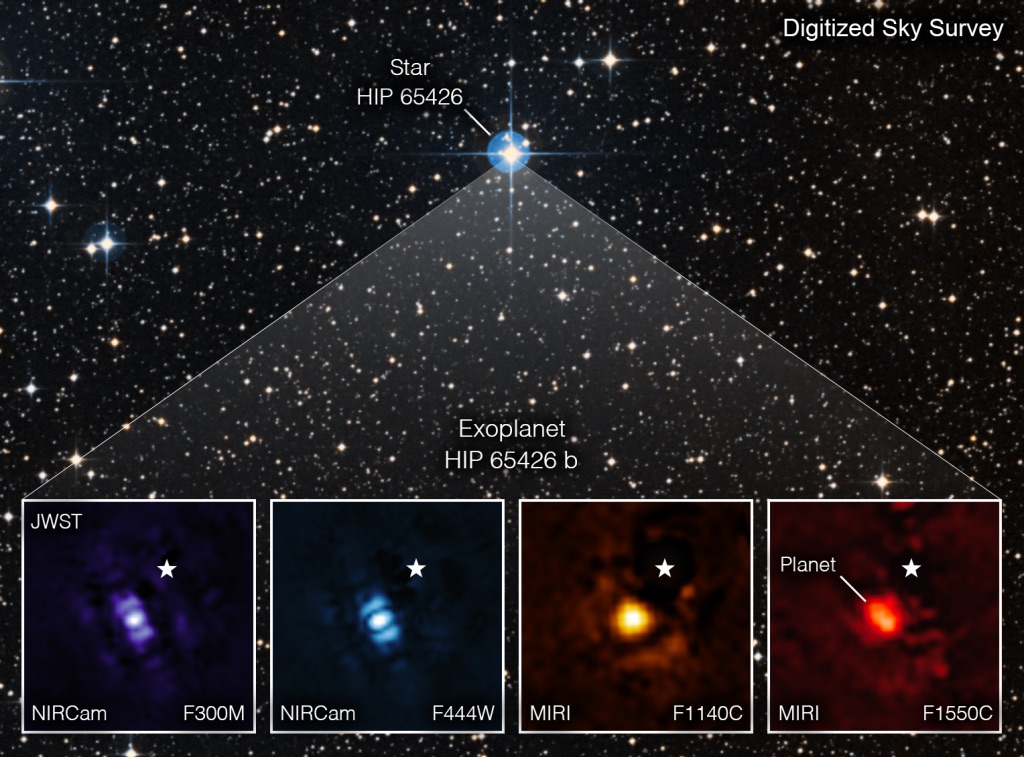
There’s nothing terribly special about the exoplanet known as HIP 65426 b. It’s a gas giant nine times the mass of Jupiter, orbiting its host star 385 light years from Earth. Just one of at least 5,000 exoplanets astronomers have detected, it could easily go overlooked. But, as NASA announced yesterday, HIP 65426 b is all at once very big news—becoming the first exoplanet imaged directly by the new James Webb Space Telescope.
Exoplanets are typically detected only inferentially—either by the slight dimming of light that occurs as they orbit in front of their parent star, or by the slight wobble they cause in the star as their gravity tugs on it. Actually seeing an exoplanet is a much harder thing to manage, since the blazing light of the star it orbits washes out the comparatively tiny world. As astronomers often describe things, it’s a bit like trying to spot a moth fluttering near a street light from blocks away.
Webb achieved its exoplanet photography feat thanks to a coronagraph built into its various imaging instruments, which blocks out the starlight, revealing anything that is orbiting the star. The images Webb captured of HIP 65426 b are not much photographically speaking, small and fuzzy and taken in four different wavelengths by two different instruments—the multi-infrared instrument (MIRI) and the near-infrared camera (NIRCam). The feat was as much a test drive for that hardware as anything else.
But the pictures are historic all the same, at last ushering in a new era of studying exoplanets by looking at them directly. “This is a transformative moment, not only for Webb but also for astronomy generally,” said Sasha Hinkley, associate professor of physics and astronomy at the University of Exeter in the U.K., who led the observations, in a NASA statement. With astronomers now concluding that virtually every star in the universe is circled by at least one exoplanet—and many, like our sun, by a whole litter of them—there will be no shortage of targets for Webb to capture in the future.
More Must-Reads From TIME
- The 100 Most Influential People of 2024
- The Revolution of Yulia Navalnaya
- 6 Compliments That Land Every Time
- Stop Looking for Your Forever Home
- If You're Dating Right Now , You're Brave: Column
- The AI That Could Heal a Divided Internet
- Fallout Is a Brilliant Model for the Future of Video Game Adaptations
- Want Weekly Recs on What to Watch, Read, and More? Sign Up for Worth Your Time
Write to Jeffrey Kluger at jeffrey.kluger@time.com